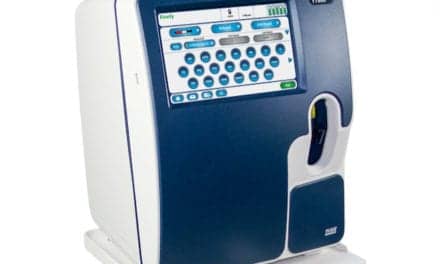
In times of easy diagnosis, quick results, and even quicker patient care, multiple technologies are merging to access immediate results. The field of serology and ELISA-like products has been a steady one with several key players in the field, all with the desire to supply products that yield accuracy, sensitivity, and a varied range of disease detection. Standard serology tests involve ELISA plates, stains, buffers, multiple steps of washing, and multiple levels of operator handling before the final colorimetric analysis yields results that can then be translated into clinical action.
The same tests have now been improved significantly, reducing operator time and assay time while enhancing the results for easy and quick detection that is innately reliable. This has been brought about by combining serology with automation, improved detection techniques, and better and more sensitive antibody-antigen binding, allowing for increased sensitivities that, in essence, improve the overall nature of the assay. Below is a brief look at the products and technologies of note and interest in the field.
One of the needs in any serological product would be the requirement for standardized buffers and components essential in immunoassays, such as ELISAs, blotting, and immunostaining. Windsor, Conn-based Rainbow Scientific carries products from its partner, Kem-En-Tec Diagnostics, that focus on easy-to-use serology (accompanying) products. Kem-En-Tec Diagnostics A/S, Taastrup, Denmark, is one of Europe’s leading producers of substrates, buffers, and reagents for manufacturers of serological tests, including immunoassays.
According to Julie Zink, account manager, Kem-En-Tec Diagnostics USA, “Success in ELISA kit manufacturing requires that every single step in the supply chain lives up to the highest standard of quality, reproducibility, and responsibility.”
Therefore, by aspiring to be the strongest link in the supply chain, Kem-En-Tec is combining its premium reagents, including liquid substrates for enzyme-based assays for alkaline phosphatase and HRP as markers, with customer diagnostics assays. Kem-En-Tec Diagnostics prides itself in providing partnerships developed with customers and in the quality of its products.
Zink adds, “Manufacturers of diagnostic ELISA kits do not want to be concerned about the basic buffers, enzymes, and substrates. ELISA IVD manufacturers require these components to be reliable so they can focus on the more variable biological components such as the antibodies and antigens.” It is in this area that Kem-En-Tec Diagnostics excels in continuing to enhance the standard of its substrates and buffers.
One of its newest products enables the design for an increased sensitivity diagnostic: ELISA–TMB SENS, which uses higher optical density values, and WELL CHAMPION, which reduces background and thus increases sensitivity. WELL CHAMPION is added directly to the coating buffer postincubation with the biomolecule. This is done without prior washing or aspiration, improving sensitivity and percent CV besides the time to manufacture precoated plates. After 15 minutes, the plates are emptied and dried for long-term storage. WELL CHAMPION provides superior blocking and improved sensitivity compared to other commercially available blocking agents since it is available in prestained orange, enabling visualization of plate coating.
Besides its new products, Kem-En-Tec Diagnostics is known for its series of TMBs (3, 3′, 5, 5´-tetramethyl-benzidine liquid), four types, that are ready to use, safe, and stable at 4°C for up to 4 years. Kem-En-Tec is the only manufacturer that offers its patented TMBs in a red prestained version that does not interfere with a kinetic or end-point immunoassay and disappears with the addition of a stop solution. This, Zink says, reduces false negatives due to pipetting or operator error. In addition, for automated instrumentation now widely used in serology, this stain offers a tracking system for reagent supply.
A PARTNERSHIP IS FORMED

As the need for precision, sensitivity, and speed increases in most diagnostics testing, the role of automation has become increasingly important. Many automation companies now partner with serology companies and their products. The thrust of research has been to yield serological diagnostics products useful in the clinical setting, especially in new and/or emerging diseases that require more than one diagnostics technology to yield definitive answers.
The basic requirements are to automate the test itself, store the samples postanalysis for future testing and archiving, and analyze the results from the automated testing. Alere, Atlanta (formerly Inverness Medical UK Limited), a leader in the serology field, has optimized its instrumentation in the field with products such as the Dynex DS2 Two-Plate Automated ELISA Processing System. This is a play on its well-established DSX walkaway workstation, but for laboratories that need automation with too-small-volume requirements to justify investing in current automation technologies. The workstation can handle up to two 96-well microplates with 12 simultaneous assays on the same run. In addition to its walkaway ability, minimum operator handling time, and instrument self-diagnosis, the DS2 workstation minimizes operator error, allows multiple repeat steps, and can be used in a variety of clinical applications, including serology, ELISAs, drugs-of-abuse testing, and infectious diseases’ diagnostics.
Another slightly higher-throughput automated workstation from Alere is the four-plate Grifols T4 Plus platform that can handle up to four 96-well plates for walkaway assay runs. Alere has also validated a variety of EIA assays to be run on the above platforms in collaboration with serology test manufacturers such as Abbott, Diasorin, TechLab, Oxoid, and others.
Since Alere has been a key player in the business of serology, diagnostics, and automation for decades, one of its key products in this field is its Sample Archiving System (SAS). Using T4 and Tecan robots, SAS reduces operator labor by storing up to 92 samples in 15 minutes with no error in tracking, dispensing, and tube ID storage information. This is an advantage to laboratories in serology or virology where sample storage at -70°C is required for further testing. And for results analysis, Alere provides the Triturus T4, an open and fully automated enzyme immunoassay analyzer that can analyze 96-well plates in groups of assays as well as in consecutive batches.
Instrumentation in autoimmune disease diagnosis has also been INOVA Diagnostics’ forte. The San Diego-based company has been offering products in this field in celiac disease, inflammatory bowel disease, RA, thyroid, and other autoimmune diseases for more than 2 decades.
“Many of our assays have been the first in their category to receive 510(k) clearance, which illustrates a dedication to work closely with researchers in developing novel and clinically useful technologies,” says Brian McEvilly, marketing manager, INOVA Diagnostics.
The company has been delivering solutions that anticipate immunolab needs via new marker development and improve efficiency without compromising on the quality of testing. By leveraging new technologies with established platforms, INOVA expects to bring biomarkers to assist in disease diagnosis that can be challenging otherwise to detect.
Some of the products demonstrating INOVA’s vision are the QUANTA-Lite (ELISA) tests in disease detection panels for rheumatoid arthritis, connective tissue disease, gastroenterology, and celiac disease. In terms of instrumentation, INOVA products include the QUANTA-Lyser 240, QUANTA-Lyser 160, and best 2000 that are automation instruments for ELISAs and EIAs (240- and 160-sample processing) or a four-plate sample ELISA module with sample identification. For plate washing and IFA reading, instruments such as Stat Fax 2600 and AP 16 IF PLUS are also part of the portfolio for INOVA.
Other innovative products that INOVA scientists are currently working on focus on Antiphospholipid syndrome, a disorder of coagulation that causes thrombosis in both arteries and veins as well as pregnancy-related complications such as miscarriage, stillbirth, preterm delivery, or severe preeclampsia. The syndrome occurs due to the autoimmune production of antibodies against phospholipid (aPL), a cell membrane substance.
In 2011, INOVA expects to launch QUANTA Lite, a PS/PT ELISA that tests for the complex of phosphatidylserine and prothrombin, a key product for this disease detection.
“This brings a welcome advance in an area that is very challenging for clinicians to diagnose in an accurate and timely manner,” McEvilly says.
THE NEXT BIG THING

But while serology and its advances work well in the reference and clinical laboratory setup, what might be the next need for corrective clinical action, speedy patient treatment, and a cohesive diagnostics effort combining efforts in serology, instrumentation, and molecular diagnostics?
Says McEvilly, “Serology offers a very well-characterized platform for which to improve health care outcomes through fast and accurate lab testing. Alternative technologies will surely have their place, but these are likely to complement serology testing parameters.” But Jay Lieberman, MD, emphasizes a concurrent path of immuno- and molecular diagnostics tools.
“Laboratories need a range of testing options, be it serology, or molecular diagnostics, or a combination of both,” says Lieberman, medical director at Focus Diagnostics Inc, Cypress, Calif, a wholly owned subsidiary of Quest Diagnostics Inc.
As an example, he points to Focus’ Dengue serological test for IgG detection against all four Dengue fever virus types. The demand for this test is increasing every year, with an outbreak in Florida in 2009 followed by a larger one in 2010 in Puerto Rico. The antibodies are detectable in about 6 days postonset, and Focus Diagnostics’ reference laboratory test can detect all viral forms of this emerging disease.
This is a classic example where serological tests give significant information to accelerate clinical intervention. Focus Diagnostics has been providing reference testing and products for disease detection for more than 30 years with a special emphasis on infectious diseases’ diagnostics.
While Lieberman agrees that serological tests play a classically important role in disease diagnostics, he points out that Focus has also branched out into other appropriate testing options besides serology. The first FDA clearance of the 2009 H1N1 test, a molecular diagnostics test, was given to Focus Diagnostics. In conjunction, the company emphasizes improving its serological tests and by releasing at least three new products a year in infectious diseases’ diagnostics.
“Serological testing has been Focus’s strength,” Lieberman says. “For example, Herpes Simplex Virus testing. Focus Diagnostics offers two assay formats for detecting type-specific HSV IgG antibodies: HerpeSelect HSV-1 and HSV-2 ELISA Kits for higher-volume testing in 96-well microplate assay format, while the HerpeSelect HSV-1 & HSV-2 Immunoblot Kit differentiates between the two antibodies using a single sample in a serological test.”
In addition, the company has a serum panel for in vitro diagnostic use in the United States as a control panel for such testing in clinical laboratories. The company focuses on two basic questions when addressing a patient’s symptoms: What disease does the patient have now? And, has the patient been chronically infected? This is the basis of treatment for most clinicians, and Lieberman follows the same principle while discussing Focus Diagnostics’ products.
“If you take the Herpe-Select Type Specific HSV-1 and HSV-2 IgG Diagnostic Test Kit, asking what the patient has now, a molecular diagnostics test would suffice,” he says. “But serologically, the chronic infection can be detected. So, with serology, a broad understanding of patient, disease, and chronic infection can be realized.”
The reference laboratory tests, including those for EBV, West Nile virus, Dengue fever, and others, have been used by multiple laboratories for many years due to the accuracy, sensitivity, and reliability in results.

To learn more about the future of Serology, visit this site often.
So what might be the future of serology? As a field, serology has been steady, with a push in innovative automation and ease of use and evaluation of assays (and results). Zink agrees. “All new technologies trend toward ease, speed, greater reliability, and less subjectivity in the diagnostic determination regardless of the technique. For serology, automation seems to be the way this is being achieved,” she says. Lieberman adds, “What comes next in the menu of tests is what is happening around us.”
Depending on the disease, its nature, and the need for detection and cure, serological companies will adapt to encompass other diagnostics tools in its field to combine with automation. In the future, a true diagnostic kit and tool would be expected to be a combination of multiple fields—complementary to one another, like serology/virology with molecular diagnostics, all linked via automation, yielding accurate, quick, and reliable results.
Madhushree Ghosh, PhD, is a San Diego-based science and health writer.





